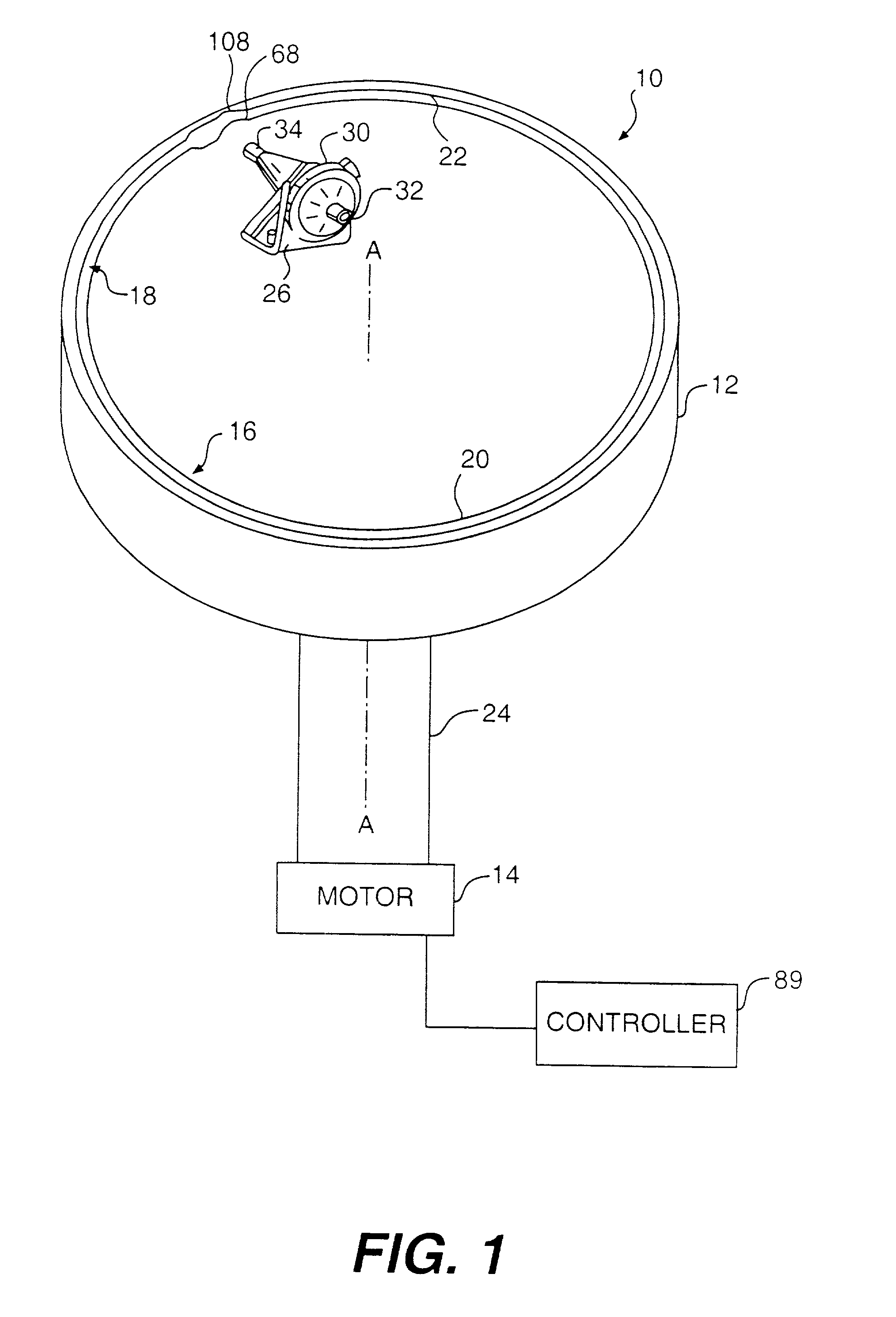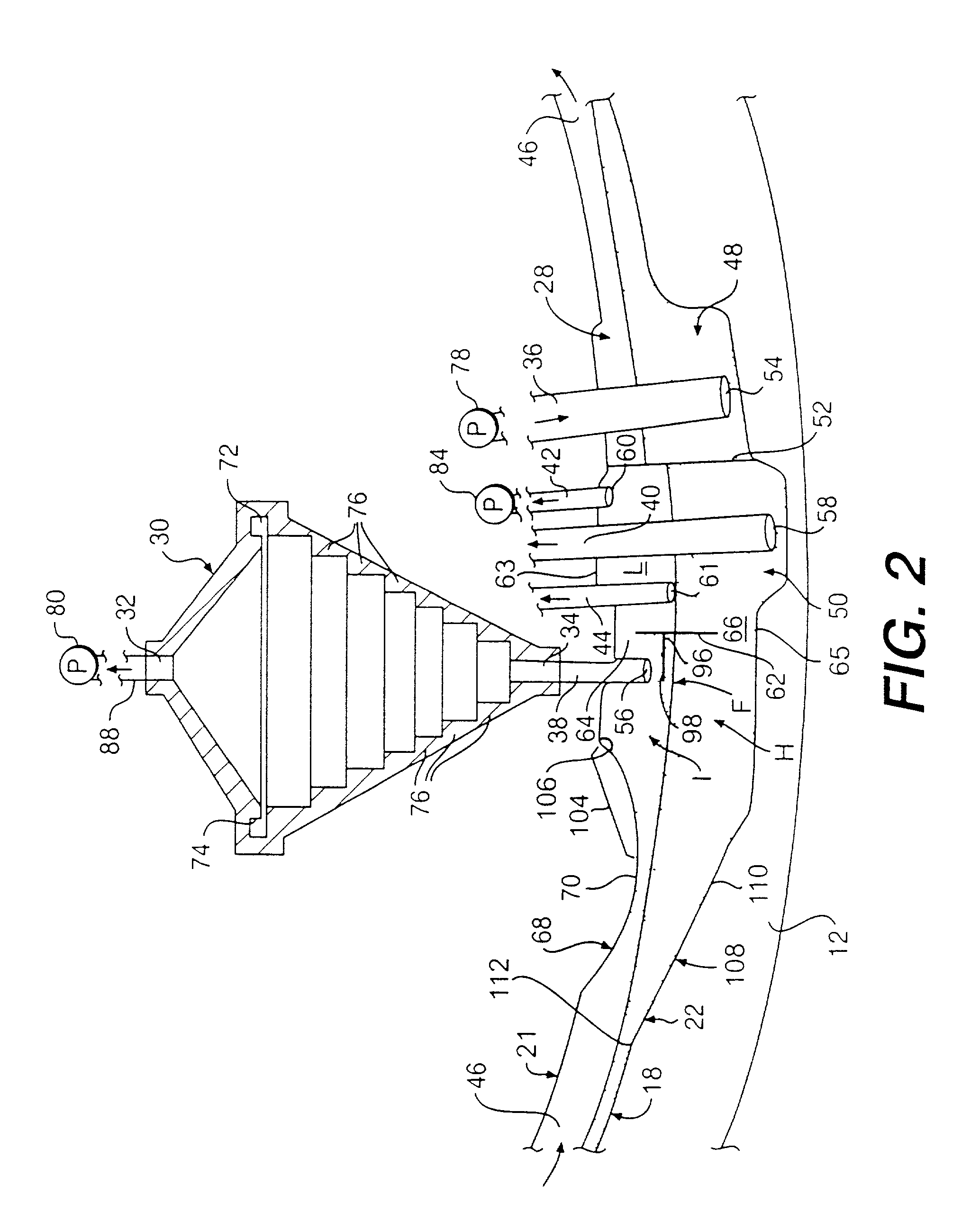Centrifugal separation apparatus and method for separating fluid components
a technology of centrifugal separation and fluid components, which is applied in the direction of centrifuges, other medical devices, suction devices, etc., can solve the problems of unable to produce platelet products consistently (99% of the time), host of serious health risks, and inability to separate all white blood cells from platelets, so as to reduce the clumping of platelets
- Summary
- Abstract
- Description
- Claims
- Application Information
AI Technical Summary
Benefits of technology
Problems solved by technology
Method used
Image
Examples
Embodiment Construction
[0039]Reference will now be made in detail to the present preferred embodiments of the invention illustrated in the accompanying drawings. Wherever possible, the same reference numbers are used in the drawings and the description to refer to the same or like parts, and the same reference numerals with alphabetical suffixes are used to refer to similar parts.
[0040]The embodiments of the present invention preferably include a COBE® SPECTRA™ single stage blood component centrifuge manufactured by Cobe Laboratories of Colorado. The COBE® SPECTRA™ centrifuge incorporates a one-omega / two-omega sealless tubing connection as disclosed in U.S. Pat. No. 4,425,112 to Ito, the entire disclosure of which is incorporated herein by reference. The COBE® SPECTRA™ centrifuge also uses a single-stage blood component separation channel substantially as disclosed in U.S. Pat. No. 4,094,461 to Kellogg et al. and U.S. Pat. No. 4,647,279 to Mulzet et al., the entire disclosures of which are also incorporat...
PUM
| Property | Measurement | Unit |
|---|---|---|
| distance | aaaaa | aaaaa |
| distance | aaaaa | aaaaa |
| radius | aaaaa | aaaaa |
Abstract
Description
Claims
Application Information
 Login to View More
Login to View More - R&D
- Intellectual Property
- Life Sciences
- Materials
- Tech Scout
- Unparalleled Data Quality
- Higher Quality Content
- 60% Fewer Hallucinations
Browse by: Latest US Patents, China's latest patents, Technical Efficacy Thesaurus, Application Domain, Technology Topic, Popular Technical Reports.
© 2025 PatSnap. All rights reserved.Legal|Privacy policy|Modern Slavery Act Transparency Statement|Sitemap|About US| Contact US: help@patsnap.com



